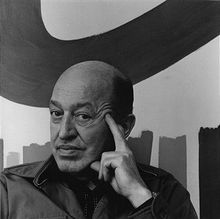Pat Lipsky at The New Criterion:
 With Paul Klee, the bad year was 1930, “when he started using thick black outlines,” Clem said. Picasso was clear until 1918, after which “he never did a good painting.” T. S. Eliot, the publication year of The Waste Land, 1922. Clem squinted above a thick exhale from his Camel, as if looking back across the years of disappointed production. Eliot had lost his stuff. On Van Gogh, the years were 1885–88, the era of Shoes and The Potato Eaters. The portraits especially “had too much paint and were not good.” For Pollock, whom Clem singled out early on as the most important Abstract Expressionist, the cutoff was 1951. It amused Clem when at Pollock’s 1951 show—the first not to succeed—people kept coming up to him and saying, “At last I get what you see in Pollock.”
With Paul Klee, the bad year was 1930, “when he started using thick black outlines,” Clem said. Picasso was clear until 1918, after which “he never did a good painting.” T. S. Eliot, the publication year of The Waste Land, 1922. Clem squinted above a thick exhale from his Camel, as if looking back across the years of disappointed production. Eliot had lost his stuff. On Van Gogh, the years were 1885–88, the era of Shoes and The Potato Eaters. The portraits especially “had too much paint and were not good.” For Pollock, whom Clem singled out early on as the most important Abstract Expressionist, the cutoff was 1951. It amused Clem when at Pollock’s 1951 show—the first not to succeed—people kept coming up to him and saying, “At last I get what you see in Pollock.”
I memorized these falling-off dates and couldn’t help thinking the idea obsessed Clem because he, too, had fallen off. He attributed his non-writing then to writer’s block, which I took as a generic term to mean he had ceased exerting any control over his schedule. What Clem did all day was see friends, read philosophy, and visit exhibitions, with his scowling instant discernment. He was nearing eighty.
more here.
